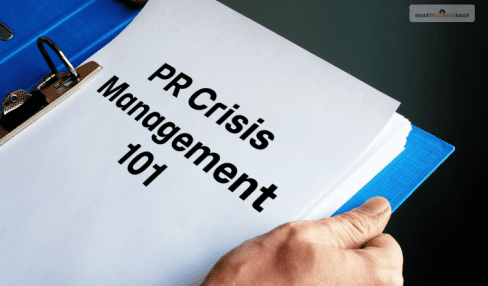How Is Virtual Tour Marketing Completely Changing The Landscape Of Product Marketing
5 Mins Read
Published on: 29 March 2023
Last Updated on: 26 September 2024

toc impalement
Businesses continue to adapt to the ever-evolving digital landscape. As a result, the use of virtual tours has become increasingly popular in the world of digital marketing.
Virtual tours provide a unique and immersive experience that allows potential customers to explore a space or product without physically being there.
In this article, we’ll explore the relationship between digital marketing and virtual tours and how businesses can leverage this powerful tool to enhance their marketing efforts.
What Is Digital Marketing And Virtual Tours?
Digital marketing refers to the use of digital channels, such as social media, search engines, email, and other online platforms, to promote a brand or product.
The goal is to reach and engage with a target audience, ultimately leading to conversions and sales. Meanwhile, virtual tours, conversely, are 360-degree images or videos that allow viewers to explore a space or product as if they were physically there.
As a result, virtual tours are commonly used in the real estate industry, but they can also be used for showcasing products, attractions, and events.
Understanding The Role Of Digital Marketing In Promoting Virtual Tours
Digital marketing plays a critical role in promoting virtual tours and 3d virtual tours by providing a platform for businesses to showcase their tours to a broader audience.
With the right digital marketing strategy, businesses can reach their target audience and drive engagement and conversions. Subsequently, one way to promote virtual tours is through social media.
Platforms like Facebook and Instagram allow businesses to post virtual tours on their profiles, where potential customers can easily access them. By using hashtags and targeted advertising, companies can reach their desired audience and increase the visibility of their virtual tours.
Subsequently, another effective digital marketing strategy for promoting virtual tours is email marketing. By including virtual tours in email campaigns, businesses can provide an immersive experience for subscribers, leading to increased engagement and conversions.
The Benefits Of Using Virtual Tours In Digital Marketing
Virtual tours offer several benefits for businesses looking to enhance their digital marketing efforts. Here are just a few:
Increased Engagement
Virtual tours provide a unique and immersive experience that captures the attention of potential customers. This allows viewers to explore a space or product in detail. Additionally, virtual tours can increase engagement and keep visitors on a website for more extended periods of time.
Improved Customer Experience
Virtual tours provide a convenient way for customers to explore a space or product without physically being there. Moreover, this convenience can improve the overall customer experience and lead to increased satisfaction and loyalty.
Enhanced Sales And Conversions
Virtual tours can lead to increased sales and conversions by providing a more detailed and interactive experience for potential customers. Virtual tours can boost customers’ confidence when purchasing.
The Impact Of Virtual Tours On Customer Engagement And Conversion Rates
The impact of virtual tours on customer engagement and conversion rates cannot be overstated. Virtual tours provide a unique and immersive experience that captures the attention of potential customers and keeps them engaged for extended periods of time.
This increased engagement can lead to higher conversion rates and, ultimately, increased sales. According to a study by Apartment Guide, properties with virtual tours receive 87% more views than those without.
Additionally, virtual tours can lead to a 20% increase in booking rates for hotels and vacation rentals.
Best Practices For Integrating Virtual Tours Into Your Digital Marketing Strategy
To effectively integrate virtual tours into your digital marketing strategy, here are a few best practices to keep in mind:
Choose The Right Platform
When it comes to showcasing virtual tours, it’s essential to choose the right platform. Therefore, Consider where your target audience spends their time online and choose a platform that will allow you to reach them effectively.
Keep It Short And Sweet
While virtual tours provide an immersive experience, it’s essential to keep them short and sweet. Aim for a tour that is no longer than 3-4 minutes to keep viewers engaged and prevent them from losing interest.
Ensure High-Quality Content
High-quality content is essential for creating a practical virtual tour. Ensure that the images or videos are of high quality and provide viewers with a clear and accurate.
Representation Of The Space Or Product.
Examples of successful digital marketing campaigns that incorporate virtual tours. This is to illustrate the effectiveness of virtual tours in digital marketing. Let’s take a look at a few case studies:
Hilton Hotels
Hilton Hotels created an immersive virtual tour of their properties, allowing potential customers to explore their hotels from the comfort of their own homes. This campaign led to a 45% increase in bookings for properties with virtual tours.
Porsche
Porsche created a virtual tour of their 911 model, providing an interactive experience for potential customers. This campaign led to a 62% increase in leads and a 22% increase in sales.
Challenges & Limitations Of Using Virtual Tours In Digital Marketing
While virtual tours offer several benefits for businesses looking to enhance their digital marketing efforts, there are also some challenges and limitations to keep in mind. These include:
High Production Costs
Creating a high-quality virtual tour can be expensive, which may not be feasible for smaller businesses with limited budgets.
Technical Issues
Virtual tours may only work well on some devices or internet connections, leading to potential technical issues for viewers.
Limited Reach
Virtual tours may reach a smaller audience than other forms of digital marketing, which may limit their effectiveness for some businesses.
Future Trends In Digital Marketing And Virtual Tours
As technology continues to evolve, we can expect to see even more innovative uses of virtual tours in digital marketing. For example, augmented reality (AR) and virtual reality (VR) technology could provide even more immersive experiences for potential customers.
And It’s A Wrap!
Virtual tours offer a unique and immersive experience that can enhance the effectiveness of your digital marketing strategy.
By providing potential customers with a detailed and interactive experience, virtual tours can increase engagement, improve the customer experience, and increase sales and conversions.
While there are some challenges and limitations to keep in mind, the benefits of using virtual tours in digital marketing cannot be ignored.
As businesses adapt to the ever-evolving digital landscape, virtual tours will undoubtedly play an increasingly important role in digital marketing efforts.
Additional Reading:


















Comments Are Closed For This Article